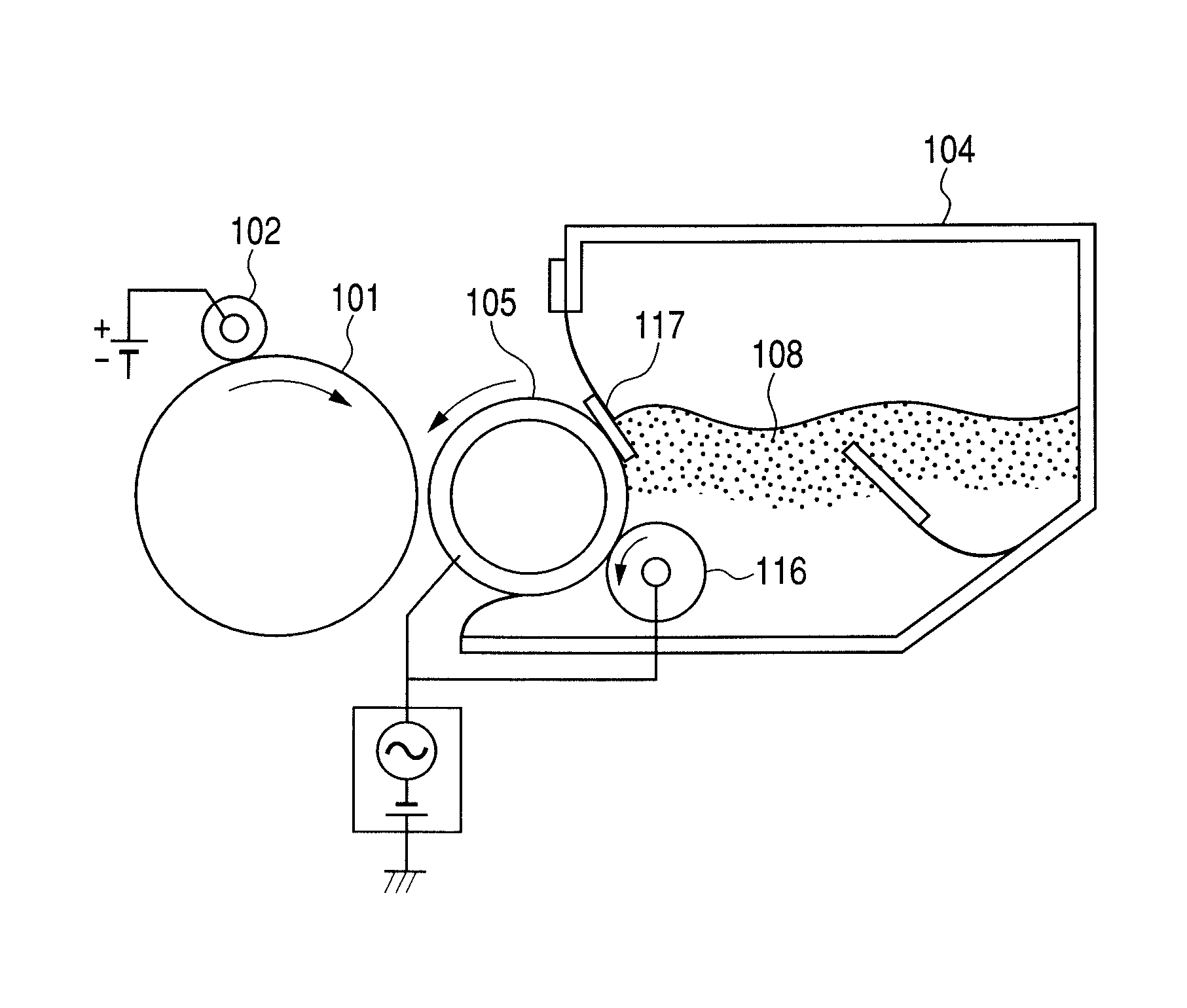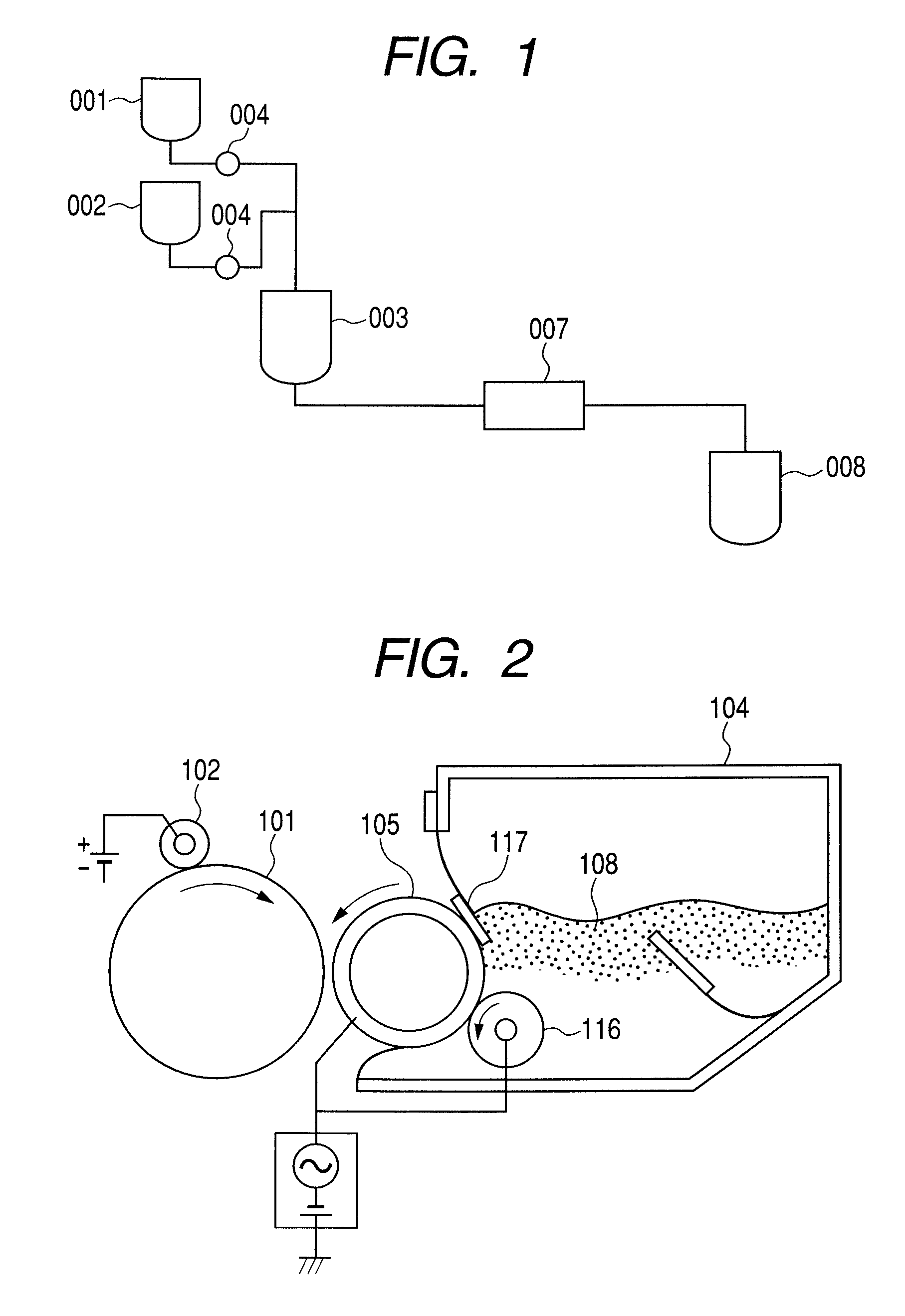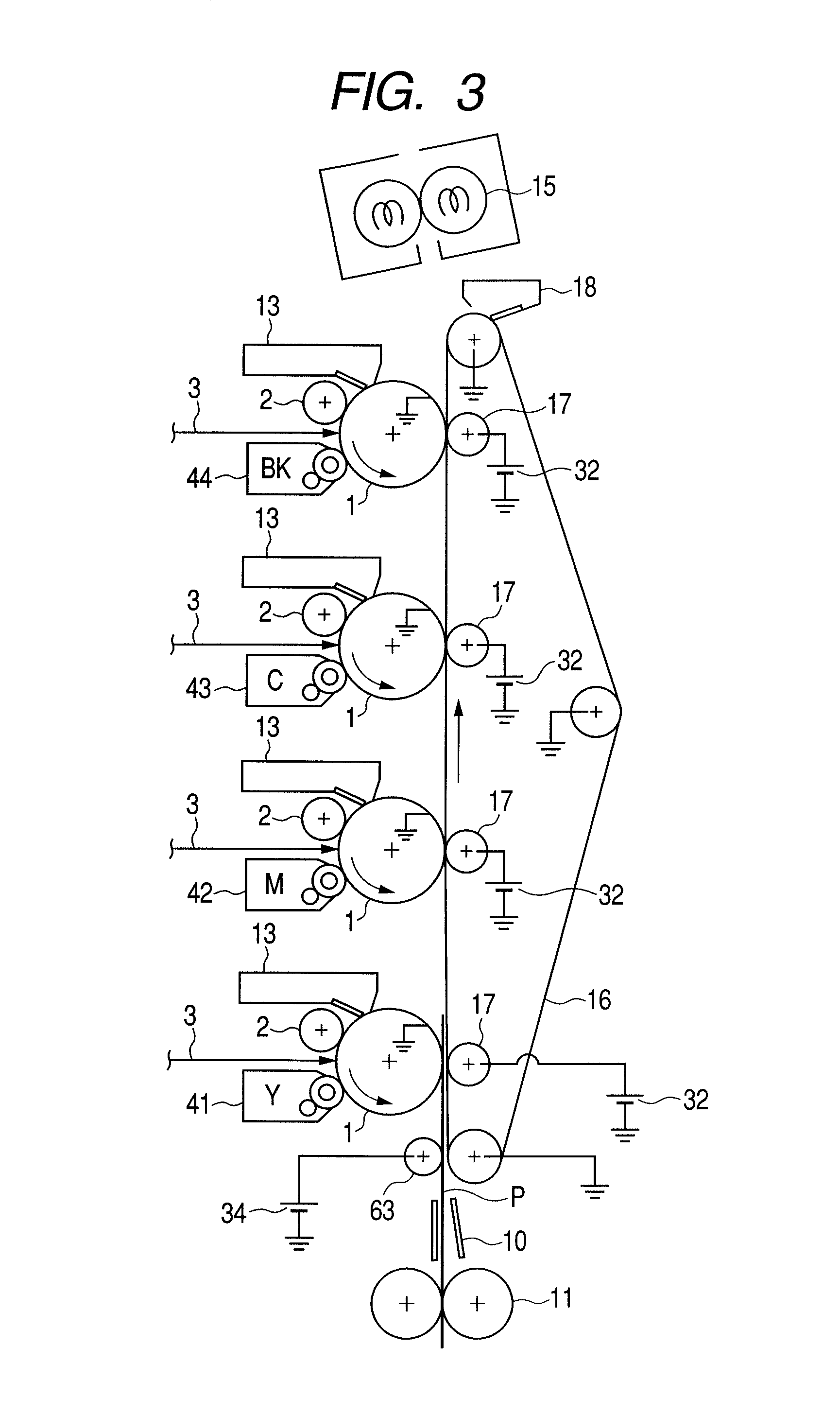Toner and image forming process
a technology of toner and image forming machine, which is applied in the field of toner, can solve the problems of high process speed requirements, ineffective conventional fatty acid metal salts, etc., and achieve the effects of less fog, superior sharpness, and high density
- Summary
- Abstract
- Description
- Claims
- Application Information
AI Technical Summary
Benefits of technology
Problems solved by technology
Method used
Image
Examples
production examples 2 to 18
[0285]Components (a) and components (b) were prepared using Surfactants shown in Table 1 and raw materials A and raw materials B, respectively, shown in Table 2 in combinations shown in Table 3.
[0286]Next, like Production Example 1, the quantities of each component (a) and each component (b) introduced respectively into flow jet mixers were so controlled by the constant-rate pumps 004 that the (a) and (b) component feed rates came equal to each other, to carry out the mixing and reaction to obtain fatty acid metal salt compositions (SA-2 to SA-18); provided that, in respect of Production Examples 4, 5 and 6, the fatty acid metal salt composition cakes in that step were each washed with water 10 times, and that, in respect of Production Examples 14 and 15, the fatty acid metal salt composition cakes in that step were each washed with water twice.
[0287]Physical properties of the fatty acid metal salt compositions obtained are shown in Table 4.
[0288]
TABLE 1SurfactantTypeTrade nameMaker...
production example 1
[0301]Into a 2-liter four-necked flask having a high-speed stirrer TK-homomixer, an aqueous sodium phosphate solution was introduced, and this was heated to 63° C., controlling the number of revolutions of the stirrer to 9,000 rpm. To the resultant mixture, an aqueous calcium chloride solution was slowly added to obtain an aqueous dispersion medium containing a fine sparingly water-soluble dispersant.
[0302]Styrene monomer: 80 parts by mass.
[0303]2-Ethylhexyl acrylate monomer: 20 parts by mass.
[0304]Divinyl benzene monomer: 0.1 part by mass.
[0305]Saturated polyester resin (terephthalic acid-propylene oxide modified bisphenol A; acid value: 15 mgKOH / g): 5 parts by mass.
[0306]Carbon black (average primary particle diameter: 40 nm): 8 parts by mass.
[0307]Release agent (behenyl behenate): 10 parts by mass.
[0308]Aluminum compound of benzilic acid: 2.0 parts by mass.
[0309]Meanwhile, the above materials were dispersed for 3 hours by means of a ball mill, and thereafter the contents were sep...
production example 2
[0312]Toner base particles (2) were obtained in the same way as in Toner Base Particles Production Example 1 except that, in Toner Base Particles Production Example 1, the concentration of the sparingly water-soluble dispersant was so controlled as to make the toner base particles have a weight average particle diameter of about 5 μm and that the temperature of the reduced-pressure distillation was changed to 90° C. and the degree of reduced pressure was adjusted.
[0313]Toner Base Particles
PUM
 Login to View More
Login to View More Abstract
Description
Claims
Application Information
 Login to View More
Login to View More - R&D
- Intellectual Property
- Life Sciences
- Materials
- Tech Scout
- Unparalleled Data Quality
- Higher Quality Content
- 60% Fewer Hallucinations
Browse by: Latest US Patents, China's latest patents, Technical Efficacy Thesaurus, Application Domain, Technology Topic, Popular Technical Reports.
© 2025 PatSnap. All rights reserved.Legal|Privacy policy|Modern Slavery Act Transparency Statement|Sitemap|About US| Contact US: help@patsnap.com



